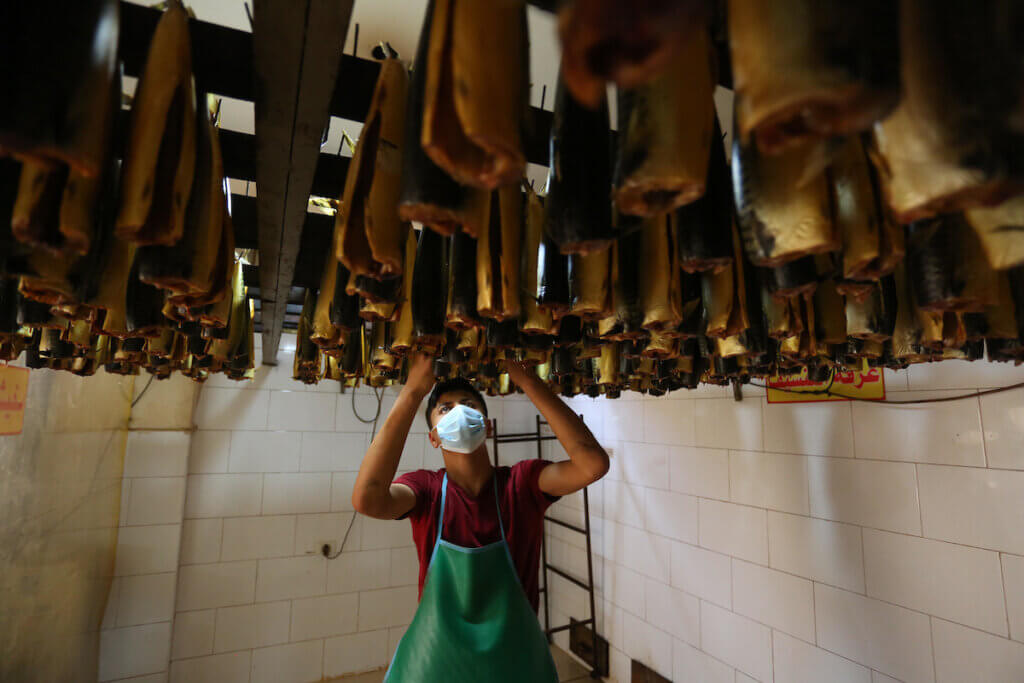The Latest:
- 838,850 Israelis tested positive for COVID-19; 831,387 recoveries; 6,374 deaths
- 329,228 Palestinians tested positive for COVID-19; 309,995 recoveries; 3,594 deaths
- Of Palestinians who tested positive,196,804 live in the West Bank, 103,583 live in Gaza, and 28,841 live in East Jerusalem
After months of a rugged surge in new COVID-19 cases in the West Bank and Gaza, a declining rate of spread has finally emerged, signaling health officials are managing to control the outbreak. However, there is much room for skepticism. This latest wave that began mid-February and saw the highest number of new confirmed cases and record positivity rates, was the West Bank’s third wave and Gaza’s second. Like past rounds of contagion, the upticks began after lockdown measures relaxed, which is again starting to take place in Gaza, where the positivity rate is still almost 30%, one of the highest in the world.
According to the WHO’s latest situation report, Gaza accounts for 63.2% of all active COVID-19 cases in the occupied Palestinian territory (not including East Jerusalem). The last week was also marked by a decrease by 20% of laboratory tests, owing to limited medical resources.
This week, night curfews in Gaza will end, along with allowing vehicular movement on the streets at all hours of the day. Mosques are once again allowed to hold prayers, fully opening just before the Eid holiday that culminates at the end of Ramadan, on May 12.
Slowed vaccination program
Health officials hope that one path out of the ups and downs of infections and lockdowns will be a wider vaccination program, upon the arrival of more than 4 million doses purchased by the Palestinian Authority, which have not yet arrived. Thus far 193,127 Palestinians are fully vaccinated, around 4% of the total population. This figure includes 110,000 Palestinian workers who were vaccinated by Israel — some of whom were already eligible under Israel’s national program that extended to Palestinians from East Jerusalem, but most are workers from the West Bank with permits to enter Israel.
Of those who have received both jabs, 38,168 live in Gaza.

The big picture: Part of why the vaccine campaign is stalled is the limited stock. Over 120,000 doses have been delivered to Gaza and around 275,000 to the West Bank, and few vaccination locations have been designated. There is also an issue around public trust, or the lack thereof.
The Palestinian Ministry of Health and the ICRC this week is launching a program to ease concerns for those who fear getting vaccinated. We’ve seen this mentioned in reporting, but not as extensively as we’re heard about it from our contacts on the ground. This week the Turkish outlet Anadolu Agency reported:
“Mohammed Musa told Anadolu Agency that he wants to get vaccinated if given the opportunity to protect himself and his family from the virus.
But Ahmed Ali, 51, was hesitant. He said he is not ready to get vaccinated as of yet because he is afraid of possible side effects.”
Doctors Without Borders mentioned vaccine hesitancy among healthcare workers in an alert they published this week about launching their own campaign to dispel misinformation.
“Implementing COVID-19 IPC measures is a big challenge in the facilities due to this evolving crisis, exacerbated by the fact that relocated staff in COVID-19 departments need more support and training,” said Rachelle Seguin, MSF medical coordinator in Gaza. “The health authorities have now increased the COVID-19 bed capacity in nine hospitals for adults and in two hospitals for children. In parallel, we are scaling up our support to alleviate the mounting pressure on an already overburdened health care system. Additionally, the vaccination rate among health care workers in Gaza is still low—approximately less than half received the vaccine. COVID-19 misinformation and vaccine hesitancy have both been challenges in responding to this crisis.”
That’s it for this week, we’ll see you next Friday.


